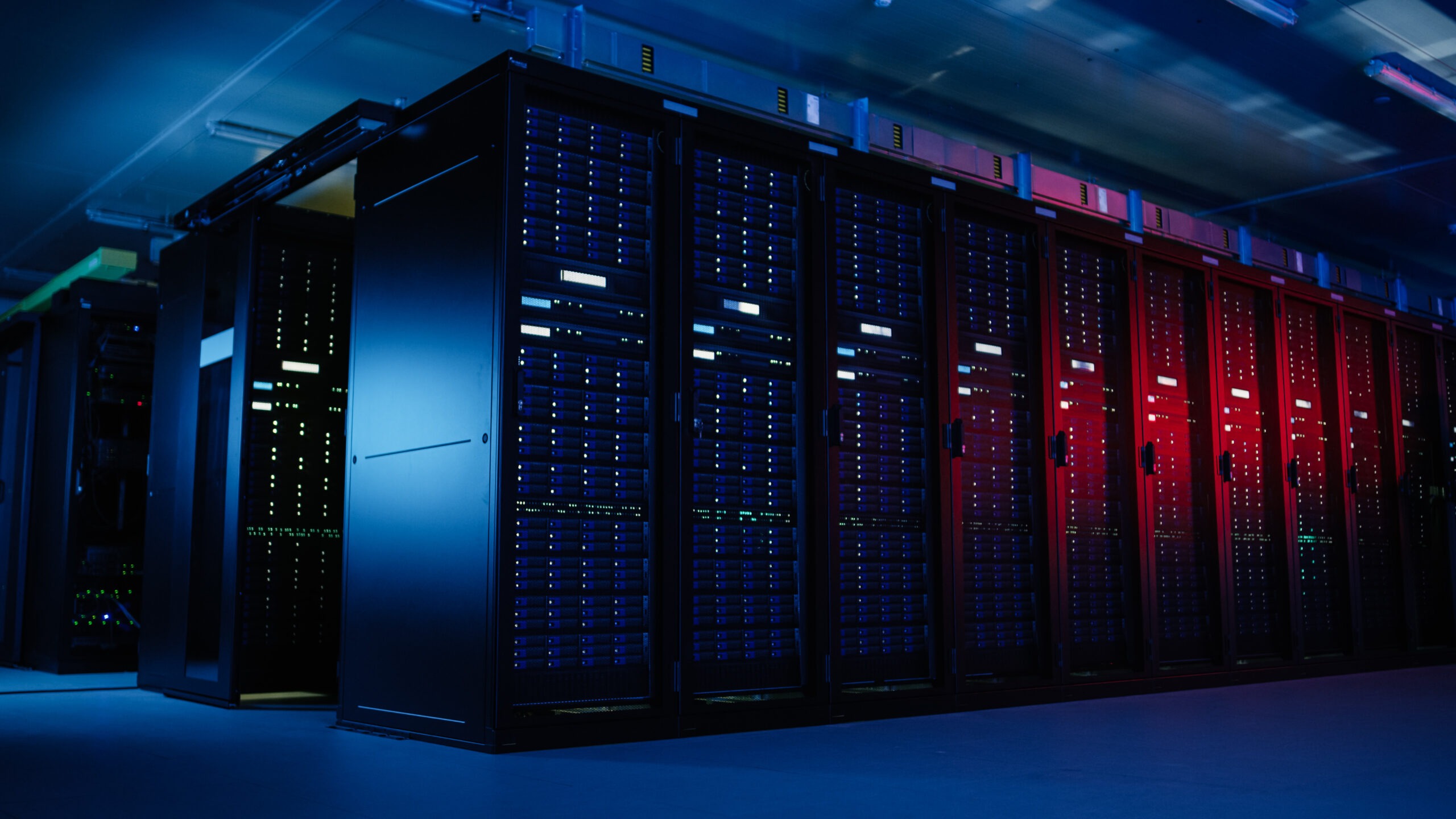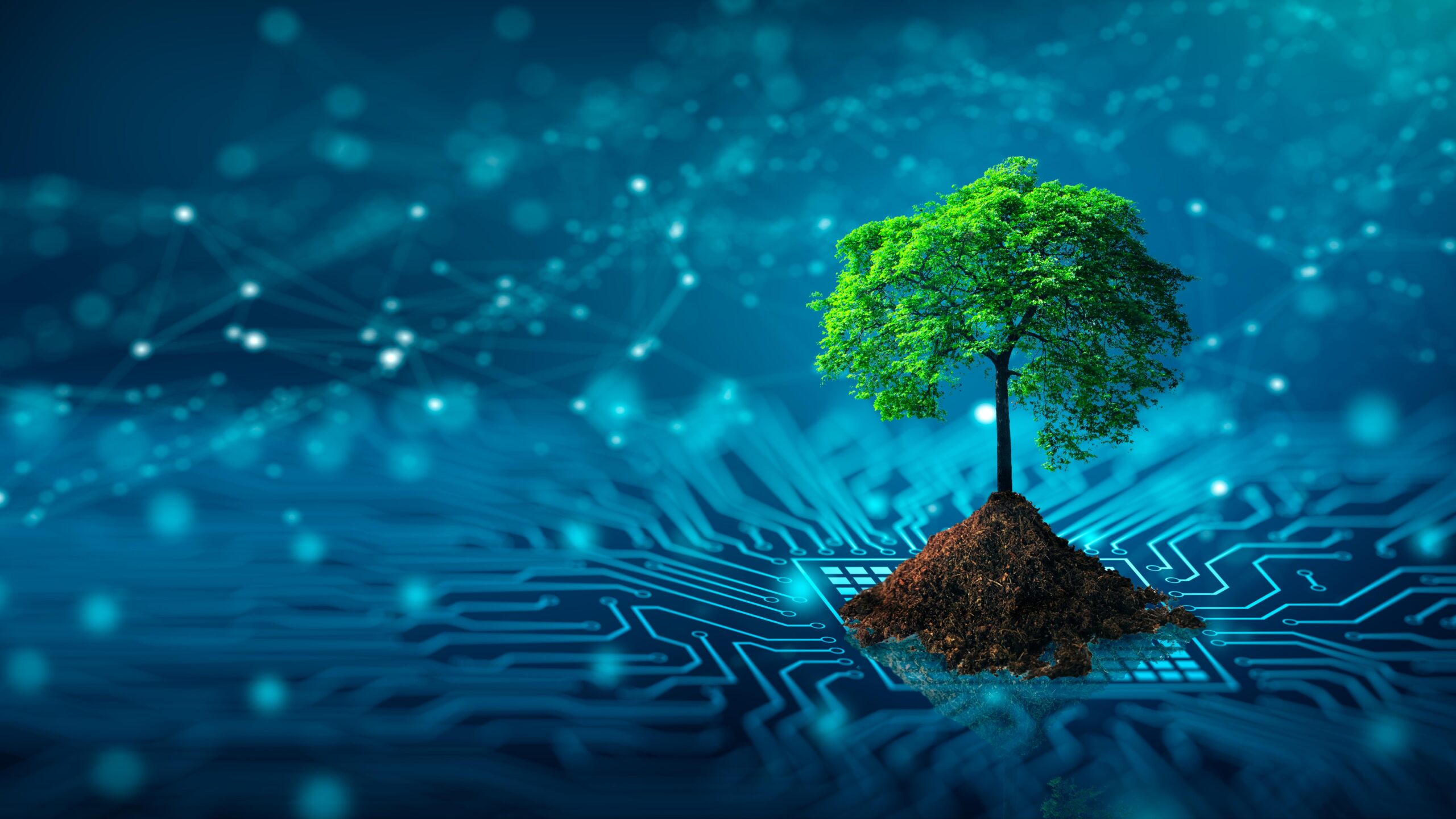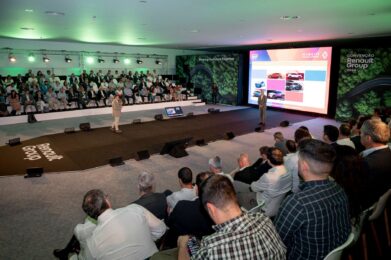Emerging research shows that AI can harm the environment. Governments and companies can take steps to regulate it.
There’s no denying that AI has been the great technological development of late. Its widespread adoption is transforming the way people work, research and live. For planners, it’s been a game changer. Smart Meetings’ recent white paper, “The Evolution of Events AI,” showed just how many planners are using AI and their perceptions of the value it adds  to their work. It’s useful for everything from building catering menus to crunching data from post-event surveys.
to their work. It’s useful for everything from building catering menus to crunching data from post-event surveys.
When it comes to sustainability, it can be a powerful tool due to its ability to rapidly assess data, detect patterns and predict future outcomes. Plenty of environmental organizations use it for these purposes.
Planners can too. Think creating an easy-to-read data set quantifying carbon emissions from your event in seconds, or just plugging into ChatGPT your perfectly curated, prompt-engineered: “I’m planning a citywide conference in [Major City] with 2,000 attendees. It will be hosted in [Amazing-Newly-Renovated-Conference-Center]. How can I work with the conference center to limit my event’s carbon emissions?”
If you want to learn more about how to get the most out of your AI use, Smart Meetings has a plethora of resources for planners.
Read More: AI: What Is It Good For Anyway?
With the ever-growing popularity of AI, it’s important to get familiar with the growing awareness around its negative environmental impacts. A growing body of research reveals that the increasing numbers of data centers, materials and energy needed to meet the demand for AI technologies are leading to increased water and energy usage, waste and greenhouse gas emissions.
This isn’t to wag a finger at anyone for using AI—there’s no denying that it’s a transformative tool. However, it’s essential to be aware of its impacts and stay on top of how it’s being regulated. It’s an emerging factor in our developing understanding of how to use AI ethically.
AI Servers and Data Centers

It’s easy to forget that everything we do on the internet and in our AI platforms relies on real-world servers, housed in data centers, where massive amounts of hardware work to get that output back on your computer screen.
As AI has come into mainstream use, the number of data centers used to run it has rapidly increased. There were around 500,000 in 2012. Today, there are over 8 million. The impact these data centers have on the environment, until recently, hasn’t come into widespread public awareness.
The United Nations Environment Programme (UNEP) recently released an issue note titled “Artificial Intelligence end-to-end: The Environmental Impact of the Full AI Lifecycle Needs to be Comprehensively Assessed,” calling for further research and regulation into AI as it relates to the environment.
Understanding the Environmental Impact of AI
Experts categorize the environmental impact of AI into three levels: direct, indirect and higher order. The direct impacts are those produced through the materials and processes it takes for an AI model to function.
Read More: Your Complete Guide to Sustainability
The UNEP issue note explains that direct impacts specifically include energy, water and mineral resource consumption, as well as the production of emissions and e-waste. Indirect impacts refer to any increased environmental damage as a result of AI usage. A UNEP article offers the example of self-driving cars, explaining that the development of this technology could lead to more people opting to drive rather than take public transit, walk or cycle, thereby contributing to higher levels of carbon emissions. Higher-order impacts refer to systemic changes in society, whether it is in consumption and production, lifestyles, social trust, misinformation and/or governance, as a result of the potential for biases in training data.
Top Environmental Concerns
Water
Data centers that house AI servers use a lot of water, both during construction and once in operation, to cool equipment and generate electricity.
Are you ever using your computer, and it starts feeling hot? A fan turns on to cool the electronic components within your computer. All electronic devices produce heat due to the electrical current flowing through their components, and some of that electrical energy becomes heat energy.
In an AI server, these electronic components exist in far more abundance than in your computer. Just like your computer needs to cool, these AI servers need to cool, and given their size, need far more intervention to do so.
According to an estimate in UNEP’s issue note, data centers housing AI servers may use 4.2 to 6.6 billion cubic meters of water in 2027—over half the annual water use in the United Kingdom in 2023. An October 2023 study by researchers from UC Riverside and UT Arlington, titled “Making AI Less ‘Thirsty’: Uncovering and Addressing the Secret Water Footprint of AI Models,” states that training ChatGPT-3 in Microsoft’s U.S. data centers can directly evaporate 700,000 liters of clean water.
Electricity
Data centers use a large amount of electricity to power the complex electronics needed to run AI servers. This electricity still largely comes from the burning of fossil fuels, a process that emits greenhouse gases. According to the International Energy Agency’s Electricity 2024 Analysis and Forecast to 2026, the amount of electricity it takes to make a request through ChatGPT is ten times that of an average Google search.
One study referenced in the UNEP issue note “suggests that training a single LLM [Large Language Model, a form of AI that uses machine learning to understand and produce human language, such as ChatGPT] generates approximately 300,000 kg of carbon dioxide emissions.” To put this into context, the study equates that to the amount of emissions produced by 125 round-trip flights between New York and Beijing.
Materials and Minerals
 The materials used to build the hardware that powers AI have to come from somewhere. UNEP states that 800 kg of raw materials are required to build a 2 kg computer. Many of the microchips used to power AI require rare earth elements and critical minerals, which are often mined in unsustainable ways that contaminate air and water, degrade biodiversity and emit greenhouse gases.
The materials used to build the hardware that powers AI have to come from somewhere. UNEP states that 800 kg of raw materials are required to build a 2 kg computer. Many of the microchips used to power AI require rare earth elements and critical minerals, which are often mined in unsustainable ways that contaminate air and water, degrade biodiversity and emit greenhouse gases.
When these materials are no longer in use, they become electronic waste, which often contains harmful substances such as lead. The UNEP issue note explains that chip demand has quadrupled since 2001 and that recycling rates for minerals remain low.
What’s Being Done?
UNEP’s report “Navigating New Horizons” examines this issue and states, “Practices such as e-waste recycling, energy-efficient data centers, renewable energy adoption and responsible resource management are essential to mitigate environmental harms.”
Its Issue Note calls on UN member states, the private sector and the research community to develop and adhere to transparent and accessible reporting on AI’s direct environmental impacts to empower users to make informed decisions regarding their use of AI. It also calls for the development of green data centers, renewable energy sources and carbon offset practices.
Over 190 countries are taking steps to follow recommendations on using AI ethically, which includes but isn’t limited to environmental sustainability. In February 2024, the United States Senate introduced legislation calling for further research and the development of a voluntary reporting system.
Research will continue to develop. Alongside it, regulations around AI, in relation to its environmental impact and other impacts, will likely increase in number and become clearer. The best thing planners—and anyone who uses AI—can do right now is stay informed and use the information they have at hand to make responsible decisions as we continue to watch the saga of AI as a tool in our work and lives unfold.




